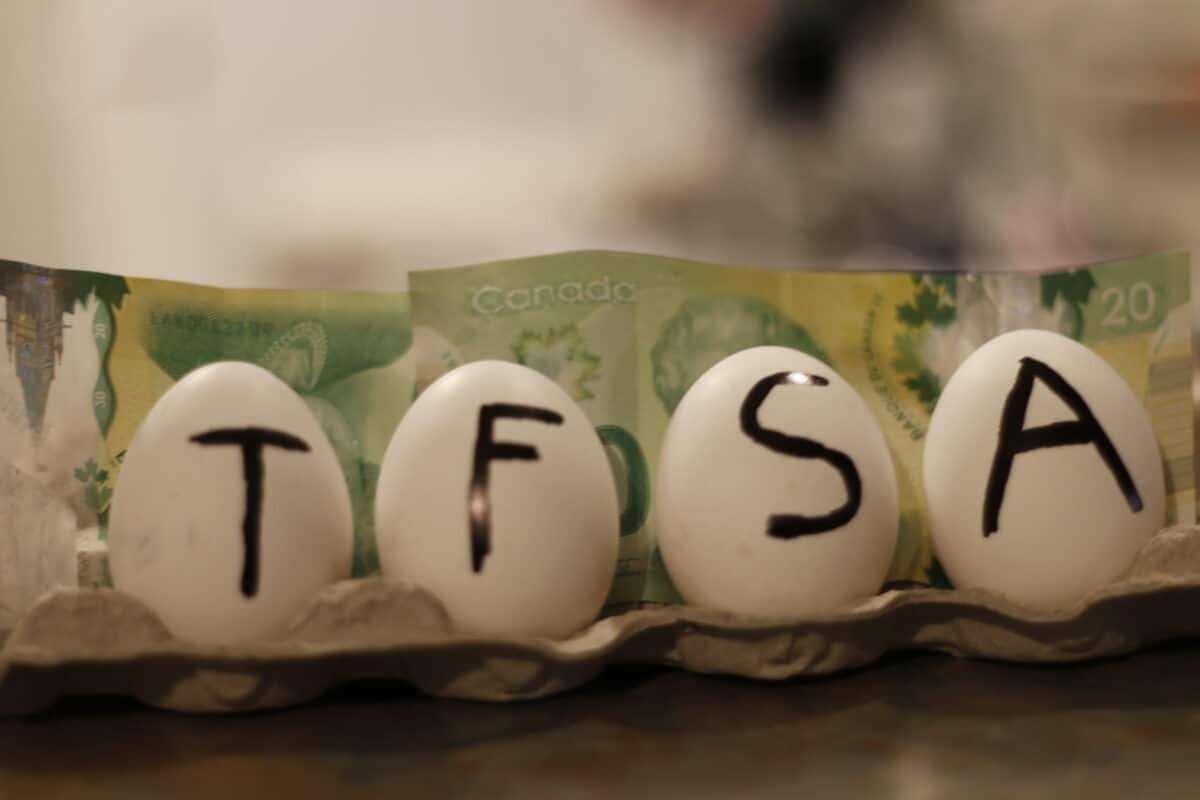Do you want to earn big TFSA income the Canada Revenue Agency can’t tax? It’s surprisingly easy to do, at least if you were 18 or older in 2009. The accumulated TFSA contribution room for somebody in that category is $95,000. If you invest that at a 3.36% yield, then you get $3,180 in annual passive income – a decent income supplement. In this article, I will explore how to earn big TFSA income that the Canada Revenue Agency can’t tax, starting with basic principles then moving on to specific investment ideas.
Invest in bonds (including GICs) and dividend stocks
To earn big income in your TFSA, you need to invest in bonds and dividend stocks. By “bonds” I mean literal bonds, bond funds, and guaranteed investment certificates (GICs). These incur high taxes normally, so they should get priority placement in your TFSA. Dividend stocks also get taxed fairly heavily in taxable accounts, so they benefit from being held in a TFSA as well. Stocks that do not pay dividends may be best held in your taxable accounts. If you plan on holding them for life, then you may never pay taxes on them anyway.
Some investment ideas
Once you’ve got your basic asset allocation down, you need to pick your specific investments. The first suggestion I’d offer here is index funds. Index funds are diversified portfolios that trade on the stock market. They offer high diversification (i.e., lower risk than individual stocks) and very low management fees. They are ideal portfolio holdings.
Consider the iShares S&P/TSX 60 Index Fund (TSX:XIU). It’s a Canadian index fund that tracks the TSX 60 – the biggest 60 Canadian stocks by market capitalization. Sixty stocks is more than enough to capture most of the risk-reducing benefit that diversification gives you – the benefit starts to taper off considerably after 25 stocks. Also, the TSX 60 is a reasonably varied index, with banks, energy companies and one tech company among the top 10. This means that not all of the stocks in it are particularly highly correlated with one another – this is a good feature because it adds to the risk-reducing benefits of diversification. XIU only charges a 0.06% management fee, so you can buy this portfolio relatively cheaply.
As far as individual stocks go, you could consider a name like Fortis Inc (TSX:FTS). Fortis is a Canadian dividend stock with a 4.41% yield at today’s prices. That means that, if Fortis’ dividend doesn’t change, then a maxed out $95,000 TFSA invested in just Fortis shares pays out $4,180 per year. Management is planning 5% to 6% annual dividend increases through 2028, so there is a good chance that the investor of today will see a higher yield on their FTS shares in the future.
Will Fortis’ management make good on its promise to raise the stock’s dividend? Most likely it will. The company has raised its dividend every year for 50 consecutive years. Its business mix is 98% regulated utilities, which means that it collects stable and somewhat “government-protected” revenue. The utility holding company is investing in capital expenditures that will increase its rate base. It looks like FTS will make good on its projected 6% annual dividend increases. In any case, this utility stock merits a place in a well-diversified portfolio.









